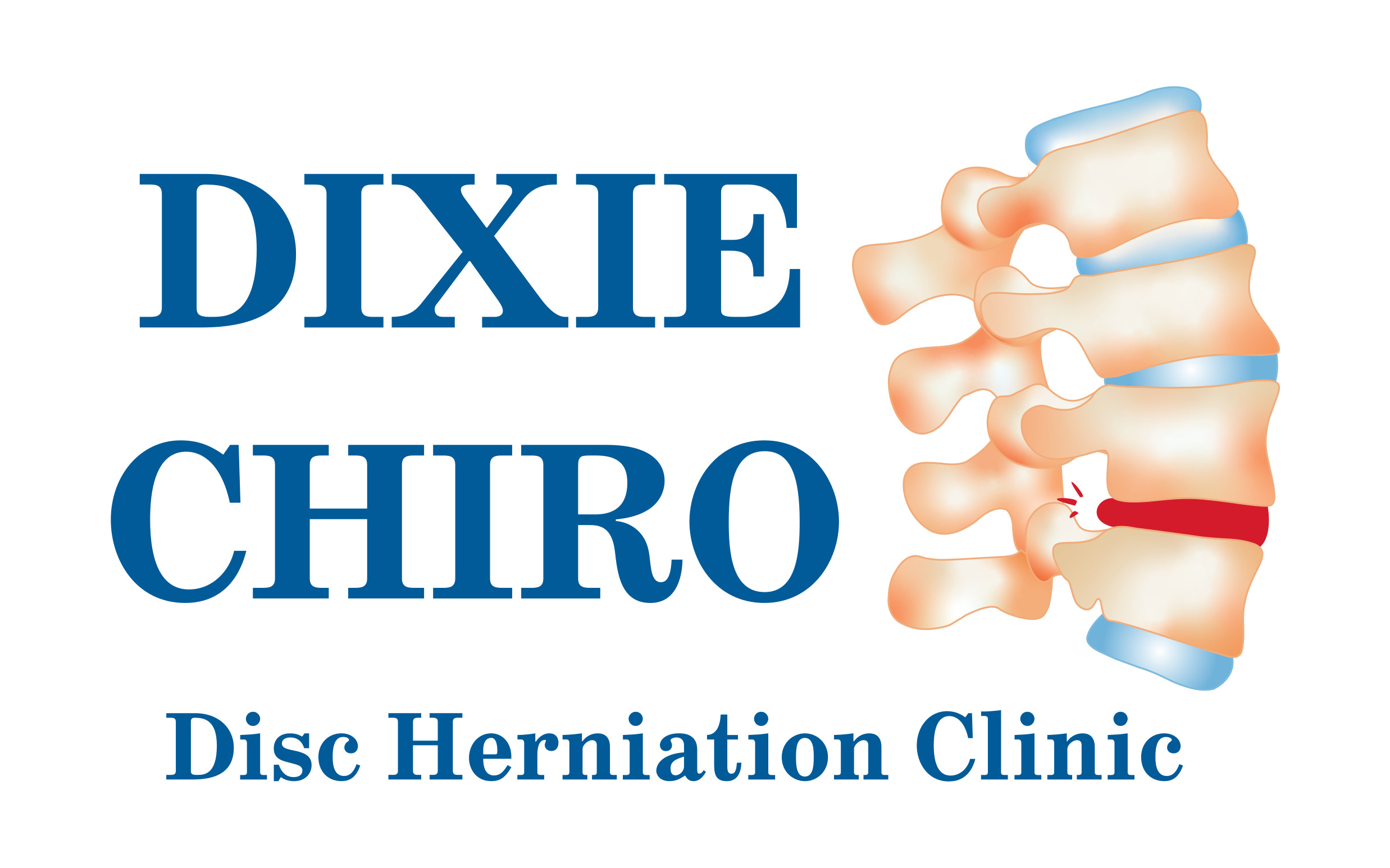If you are one of the millions of Americans who suffer from lower back or neck pain, you know how debilitating it can be. Burning, shooting nerve pains and muscle in constant spasm make even the simplest movement an ordeal. Often, just finding a comfortable position is virtually impossible.
Traditional treatment starts with medication and bed rest and ends with the prospect of surgery, a painful, expensive, frightening experience. Treatments such as acupuncture, epidural injections, hot/ cold therapy, massage and other “therapeutic” techniques may offer limited relief.
Considerable research has produced a relatively new therapy that is upwards of 80% effective in treating inter vertebral disc problems. This treatment, known as decompression therapy, has opened the floodgates of new patients to Dixie Chiropractic.
Decompression therapy is a traction-based procedure that relieves pain associated with carpal tunnel syndrome, disc herniation, degenerative discs, posterior facet and compression-related syndromes. This process renders quick, effective and amazing pain relief that enables most patients to return to an active lifestyle. It is an FDA-cleared procedure. Decompression occurs as a result of an improved understanding of how to reliably cause the spine to “unload”. The vertebral separation causes a vacuum or a centripetal force in the disc, which results in a “negative systolic pressure”. This “vacuum effect” helps in the retraction (pulling in) of the extruded disc material. When the disc retracts it can stop putting pressure on the spinal nerve or spinal cord, thus the term “decompression”. Once the nerve is decompressed, 80% of patients will notice a decrease in arm/leg pain.
Someone who has previously not found relief through other treatments is a perfect candidate for this treatment. Decompression therapy may also be useful in determining the overall prognosis of passive care and expediting the phase-in of rehab protocols. Clinical findings suggest decompression will create a relatively quick initial response. Patients who will do well tend to feel a sense of relief (which can be a direct pain cessation or a centralization of pain and/or reduction to an ache or stiffness) within six sessions. Full relief, if attainable through this passive treatment, will usually be in as soon as a few weeks. (Occasionally a “stubborn” pain syndrome may continue to improve slowly over 15 sessions, though this is not the norm.) Often, patients will be treated in 4-6 sessions and notice enough relief to allow active rehab to begin. Their decompression may continue (pre- or post-rehab depending on the methods chosen) for 4-6 further sessions before discontinuing or reducing the frequency. Typical frequency is 3-5 times per week. The extent and seriousness of the symptoms will determine if more than 3 sessions per week should be used.
Treatments only take about 25-30 minutes. Call our office today for more information at 435-674-1443
Laser Therapy
Accelerated tissue repair and cell growth. Photons of light from lasers penetrate deeply into tissue and accelerate cellular reproduction and growth. As a result of exposure to laser light, the cells of tendons, ligaments and muscles are repaired faster.
Faster wound healing. Laser light stimulates fibroblast development (fibroblasts are the building blocks of collagen, which is predominant in wound healing) in damaged tissue. As a result, laser therapy is effective on open wounds, scars, and burns.
Reduced fibrous tissue formation. Laser therapy reduces the formation of scar tissue following tissue damage from cuts, scratches, burns or surgery. Scar tissue is the primary source of chronic pain.
Anti – inflammation. Laser light has an anti-edemic effect and as a result, there is a reduction in swelling caused by bruising or inflammation.
Analgesia/Pain blocker. Laser therapy has a beneficial effect on nerve cells which block pain transmitted by these cells to the brain and which decreases nerve sensitivity.
Increased metabolic activity. Laser therapy creates higher outputs of specific enzymes, greater oxygen and food particle loads for blood cells. The damages cells can repair and regenerate faster.
Improves nerve function. Slow recovery of nerve functions in damages tissue can result in numbness and impaired limbs. Laser light will speed up the process of nerve cell reconnection and thus reduce nerve pain.
Trigger points and acupressure points. Laser therapy reduces muscle trigger points and stimulates acupuncture points on a non-invasive basis providing musculoskeletal pain relief.


Recent Comments